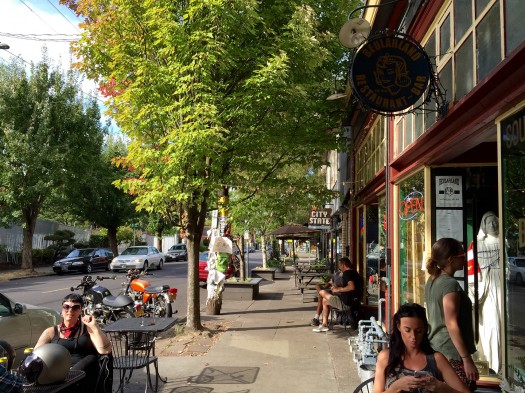Economic Development
Walkability: Good money after bad
Let’s talk about dollars spent. Millions of dollars. 7.2 million dollars specifically, of which 5.5 million came directly from the local economy. The goal? At least according to local leadership, it was to increase quality of life via improved walkability. First, a caveat: This isn’t going to be one of those pieces denouncing government spending…
Read MoreMaking Better Places to Fail: Take those jobs and . . (Part II)
First, let’s review: Of all the sub-topics in urban planning and design, the ones likely to generate the most anxiety are those where land use planning intersects with economic development. Old-school economic developers signal their nervousness pretty quickly when they sense planning strategies are heading in directions that might keep them from promising infrastructure goodies…
Read MoreCoding for Character: Doing away with the zoned out nature of our cities
Having lived in six 100-year-old homes over the last 25 years, autumn always makes me carefully consider what it takes to keep these beautiful elders operational and up-to-date. As we were going through the process of winterizing this year, I am reminded of our recent attempt to modernize by making one small addition that would…
Read MoreThe Unkickable Can: Towards a ‘Livability Synthesis’
Maybe it’s a brief glimpse, inspired by Pope Francis’s visit, of a collective will to be better humans. Or maybe it’s just the math. But I’m feeling more hopeful about future traction for arguments — and for action — for more meaningfully connected, livable communities.
Read MoreWalkability: It’s not about the buildings, or even the streets. It’s about the experience.
We are excited to see the high level of understanding in the Surgeon General’s Step It Up call to action last week, to promote walking and walkable communities. The Surgeon General noted, “Improving walkability means that communities are created or enhanced to make it safe and easy to walk and that pedestrian activity is encouraged…
Read More
Take These Jobs and…
(You know the rest)
Cheerleaders for American business used to get peeved when cynics contorted a quote by General Motors CEO Charles Erwin Wilson in 1953. The popular, misinterpreted version: “What’s good for General Motors is good for the country.” What Wilson actually said: “I thought what was good for our country was good for General Motors, and vice…
Read MoreRemember that Katrina Cottages thing? Whatever happened to that?
This is the second of two parts addressing Hurricane Katrina 10 years after the storm. The first looked at issues in New Orleans. This one focuses on one hoped-for innovation in the storm’s wake in Coastal Mississippi. Right about now, a couple and their two children are getting much-needed affordable housing help via a move…
Read MoreTop 10 Techniques for Educating Community Leaders about Placemaking
Extraordinary strides have been made in the advancement of placemaking over the past twenty-five years. Think about it. In the years prior, the term “placemaking” wasn’t even in common use by developers, designers and planners. Nor were terms such as form-based code, new urbanism, smart growth, transect, charrette, visual preference survey, traditional neighborhood development, transit-oriented…
Read MoreKatrina ‘Ten Years After’: And the band plays on
I guess it says something about where I am on life’s conception-to-compost journey that the phrase “Ten Years After” evokes a forgettable British group from the late ‘60s and early ‘70s. But, hey, let’s at least credit Alvin Lee with capturing a timeless sentiment in his lyrics for the band’s 1971 hit, “I’d Love to…
Read MoreIt’s a Trend: More Businesses Are Choosing Downtowns and Walkable Locations
As I reported earlier this year, more and more businesses are choosing to locate in downtowns and walkable suburban locations, in part to attract younger workers who prefer a less car-dependent, more urban lifestyle. In some cases, as with hospitality giant Marriott, the preference is being expressed in planned moves from sprawling suburbs to transit-accessible places with…
Read More


